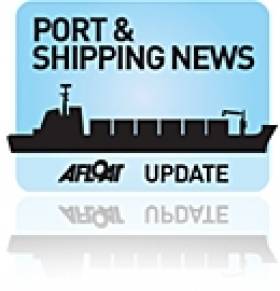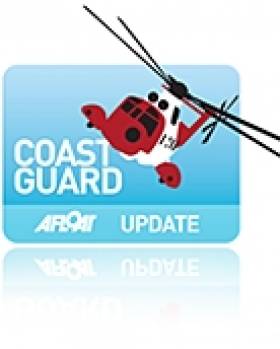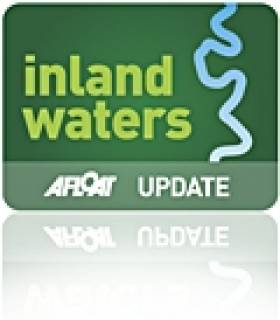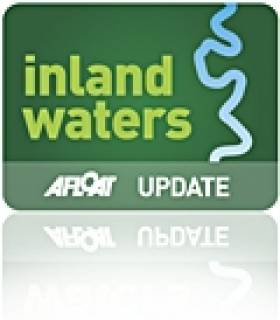Displaying items by tag: Shannon
New Helicopter for Irish Coast Guard is Completed
#COASTGUARD - Sikorsky has completed production of a new S-92 helicopter for the Irish Coast Guard under the rescue service's €500 million deal with CHC Ireland.
The US-based helicopter firm and CHC formalised the purchase on Wednesday (21 December) with Irish Coast Guard director Chris Reynolds during a hand-over ceremony at the S-92 commercial helicopter assembly facility in Coatesville, Pennsylvania.
Equipped for dedicated search and rescue (SAR) operations, the helicopter will provide coverage for deep Atlantic Ocean missions, service Ireland's offshore islands and provide rescue cover on the west coast from Cork to Galway.
The new aircraft will be based at Shannon and will replace the current coastguard SAR helicopter, a Sikorsky S-61, which has given 20 years of unbroken service.
According to Sikorsky, the S-92 is equipped with advanced systems and hardware, including an automated flight control system that enables the pilot to fly pre-programmed search patterns and perform delicate hover manoeuvres; a wireless intercom allowing a rescue swimmer to communicate with the crew; radio transceivers to communicate with ships and rescue services; a weather radar and infrared sensor; and a digital video system to record rescues.
Reynolds said the new helicopter - which joins four second-hand machines on a 10-year lease - represents a stepped improvement in Ireland's ability to care for and service its seagoing, coastal and island communities.
"I am very happy that the Coast Guard will operate what I consider to be the leading SAR helicopter in the world," he added.
As reported earlier this year on Afloat.ie, the new chopper is part of a deal that raised questions from a Fine Gael TD over allegations that a competing tender did not have a "good reputation".
Fergus O'Dowd questioning the contract with CHC Ireland after receiving documents in which Chris Reynolds said the Air Corps – whose helicopters are supplied by AgustaWestland - were uneqipped for the role and that no cost saving would be made if they took on the service.
Shannon Estuary's Deep Waters Hold Key to Trans Shipment Potential
The potential for developing a 'transhipment port' on the Shannon Estuary topped the agenda of meetings held by Sean Kelly MEP and leading US politicians and business people at Jacksonville, USA - home to one of the largest commercial cargo ports on the Atlantic Coast.
International maritime consultant, John Martin, recently identified the Shannon Estuary as having potential for a bulk transshipment centre due to its 16 meter depth waters. Most UK and European ports have channel depth of just 10 meters, limiting the size of vessels that can be accommodated. This is a gap in the cargo market that Shannon can fill according to Mr Kelly.
"The study by Mr Martin indicated feasibility for the establishment of a port at Shannon to receive cargo vessels drawing in excess of 15 meters and particularly dry bulk goods. The cargo could be broken down in Shannon (Ships of 15+ metres draft) and shipped in smaller tonnage vessels (ships of 6.4 to 12.5 metres draft) to Nordic countries and European smaller ports. Mr Martin also pointed out that there could be significant savings for shipping companies using this method when transporting dry bulk goods when compared to using ports with limited water depth.
"The development itself would represent a multi-million boost for the region, creating employment both directly and indirectly through spin-off industries. It is an idea I would like to see fully investigated and that is why I raised the issue with US politicians on my visit to Jacksonville in the last few days, as part of my work as a member of the EU-US Parliamentary Relations Committee.
"Ireland and the US enjoy a proud tradition as trading partners and location-wise, a port facilitating North American shipping companies is very logical. US Senators, Congressmen and business leaders reacted positively to the idea and it is something I will pursue further as an MEP for Ireland South," Mr Kelly concluded.
Amongst those present at the talks was a US citizen with Kerry ancestry - Mike Breen the Senior Director International Department at Jacksonville Regional Chamber of Commerce, and Jerry Mallot - President at Cornerstone Regional Development Partnership.
Foynes YC to Host 2012 WIORA West Coast Championships
#WIORA– As a flagship event to mark their 50th year of sailing on the Shannon Estuary, Foynes Yacht Club are setting an aggressive target to attract 50 boats to next year’s West of Ireland Offshore Racing Association (WIORA) sailing championships to be held from the 11th to 14th of July. The WIORA poster is below.
Ed Conway and Raymond McGibney are flying the flag for Foynes having being recently re-elected to the WIORA committee for another year.
IRC, ECHO and White Sails classes will be raced and the club says a festival atmosphere ashore will be 'guaranteed with well-priced, quality catering and top class live entertainment' provided at the recently renovated clubhouse.
All boats entered will be given free and secure berthing. Free lift-in/lift-out of trailer sailors will also be arranged. Liam Dineen has been appointed OOD and already over forty boats have registered.
In addition to all Western clubs, Foynes will be canvassing sailors from the active racing fleet on Lough Derg to come by road or river to join in this celebration sailing event, last held in Foynes in 1998.
While standard “around the cans” windward-leeward courses will be laid for the IRC and Echo fleets, more varied courses for white sails will be set, taking yachts to all parts of the scenic estuary. A special section is currently being added to the club website to cover all aspects of the event.
More on The Estuary here

Coast Guard Chopper Rescues Couple in Galway Bay
The pair were lifted to safety by the Shannon-based Irish Coast Guard helicopter off the Co Clare coast, close to Blackhead.
They were subsequently treated at University Hospital Galway for possible hypothermia. No other injuries were reported.
Injured Fisherman Airlifted to Hospital by Shannon Coastguard
An injured man fisherman airlifted to hospital yesterday from a boat off Kerry coast, The Irish Times reports.
The Shannon-based Irish Coast Guard helicopter was dispatched to assist the crewmember on the UK-registered fishing vessel Achieve, some 110 miles southwest of the Blasket Islands.
He was airlifted to Tralee Regional Hospital, where he is being treated for serious injuries.
The incident marked the fourth time that the Shannon helicopter has been called into action this week.
This included its assistance of the crew of the yacht Rambler 100, which capsized near Fastnet Rock while competing in this year's Rolex Fastnet Race last weekend.
Sunken Vessel Presents Hazard on the Shannon
It is intended to lift this vessel using a pontoon and lifting equipment on Thurs 30 Jun 2011, commencing at 08.00hrs. It is expected that the operation will take four hours. Masters should expect to be delayed when passing through the area.
All vessels passing the pontoons should exercise due caution and heed the advice and instructions of the safety boat in attendance.
Southbound vessels in particular should be aware of their speed as they approach the navigation arch with the attending flow in order to avoid a close quarters situation with the pontoon. Use of extra fenders in the bow area of vessels would be a prudent precautionary measure when passing the lifting rig.
Powerboaters Expected to Heed Shannon One Design Race
Powerboaters have been asked to heed their wash when passing vessels under sail. The request comes on the eve of the Shannon One Design (SOD) long distance race. SODs will race from Athlone lock to Banagher harbour on Sat the 25th and from Banagher to Portumna bridge on Sun 26th.
Students Sail into Banagher's Heritage Harbour
As the first vessel edged under the Bridge and the inland waterways. Fleet turned purposely into Banagher Harbour, it was clear that these were no ordinary boats. These were the vanguard of the Heritage Boats that are celebrating the 10th anniversary of their association over the coming weeks.
The 6th Class students of Saint Rynagh's National School were eagerly awaiting the arrival of the fleet. In recent weeks they have been participating is a project centred round the Heritage Boats, their links with Banagher and incorporating the wider heritage and history of the Shannon River. The students, supported by the school principal Mr Fergal McMahon, class teacher Ms Catherine Dolan and associate teacher and local historian Mr James Scully, explored the impact that the River Shannon has had on the town and its hinterland over the centuries.
The Heritage Boats, now visiting the town's harbour, are the very same boats that many decades ago carried the cargos that were the lifeblood of the nation's commerce. Banagher was an important harbour and distribution point on the inland waterway system.
Supported by Offaly County Council and with the great help of renowned artist Ms Rosalind Fanning from the Tin Jug Studio in Birr, the students have documented their work in a unique publication called "HBA 10 @ Banagher".
With their many new young fans, the old boats of the fleet of the Heritage Boat Association are assured a warm welcome in Banagher in the decades ahead.
New GPS Product for Shannon Navigation
The Inland Waterways Ireland download is the first boating product developed for the Shannon Navigation compatible with all Garmin mapping compatible recreational and marine devices.
It allows the user to search for points of interest (POIs) as well as build routes automatically or manually on the Shannon Navigation network.
POIs include marinas, geographic named places, lakes and much more. The Inland Waterways Ireland product also features locks, jetties, fishing locations as well as lake and river shorelines.
If you fancy getting this download to explore this beautiful part of Ireland yourself go HERE.




































































